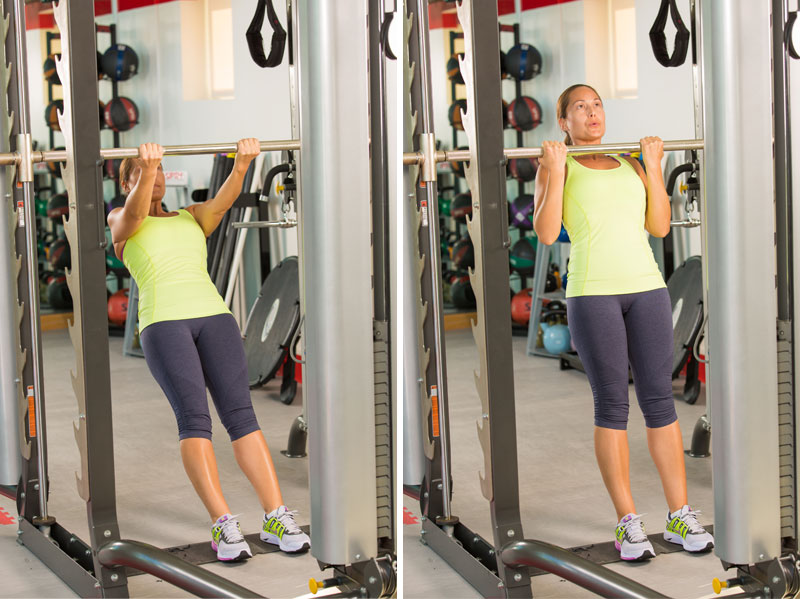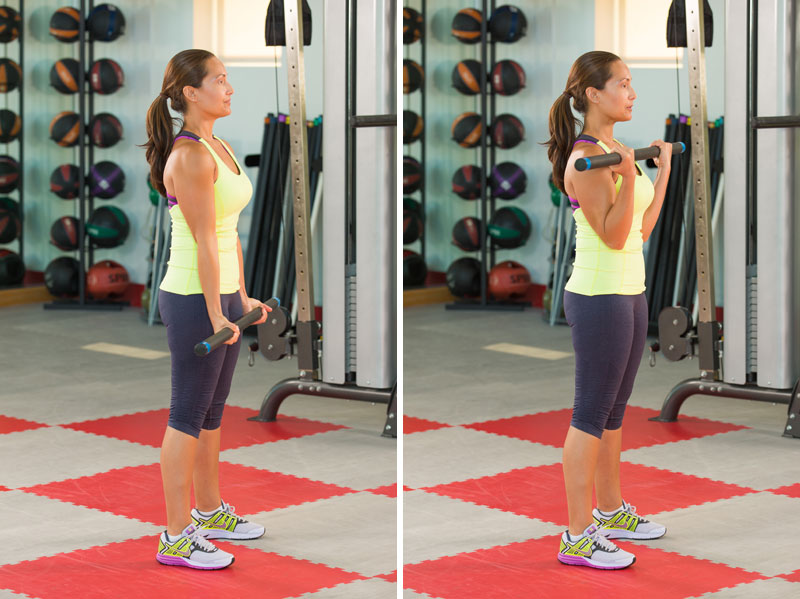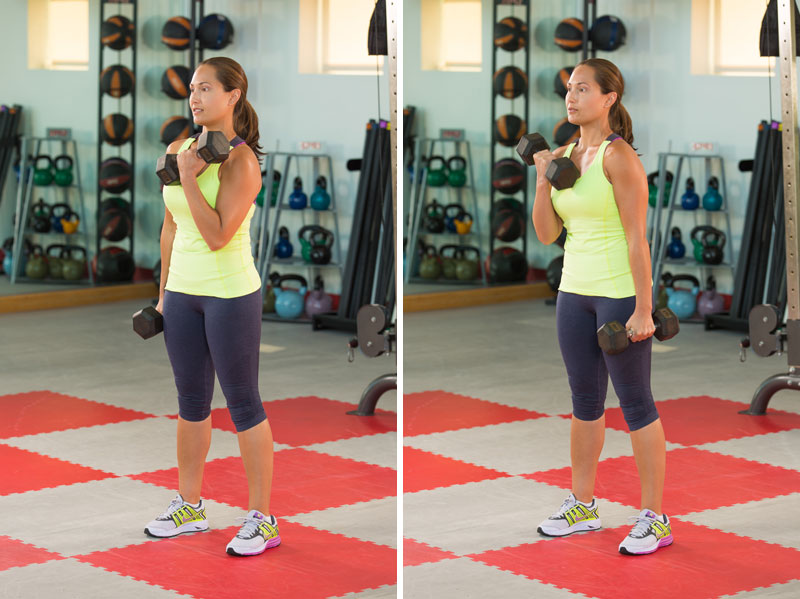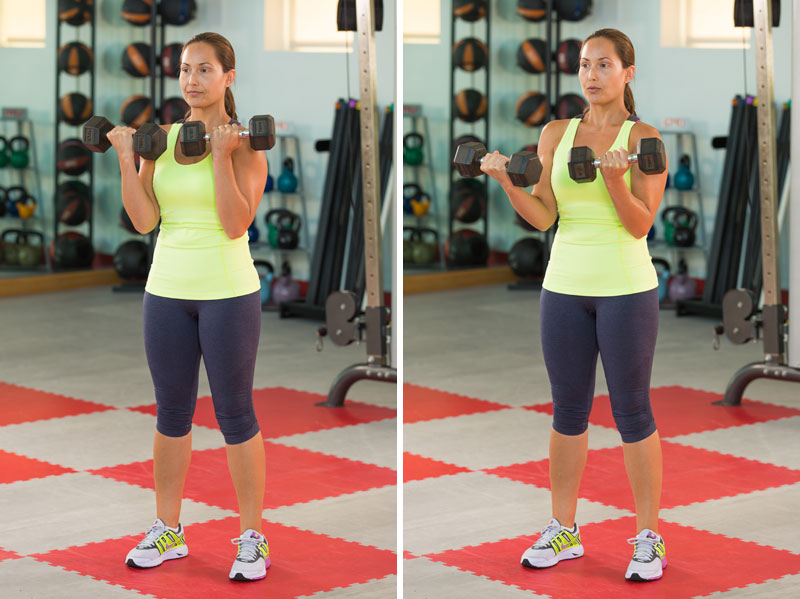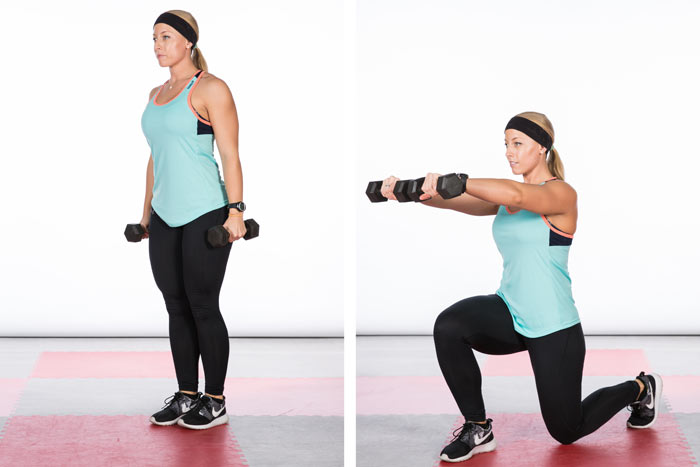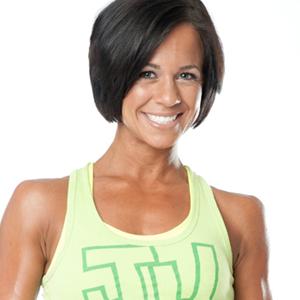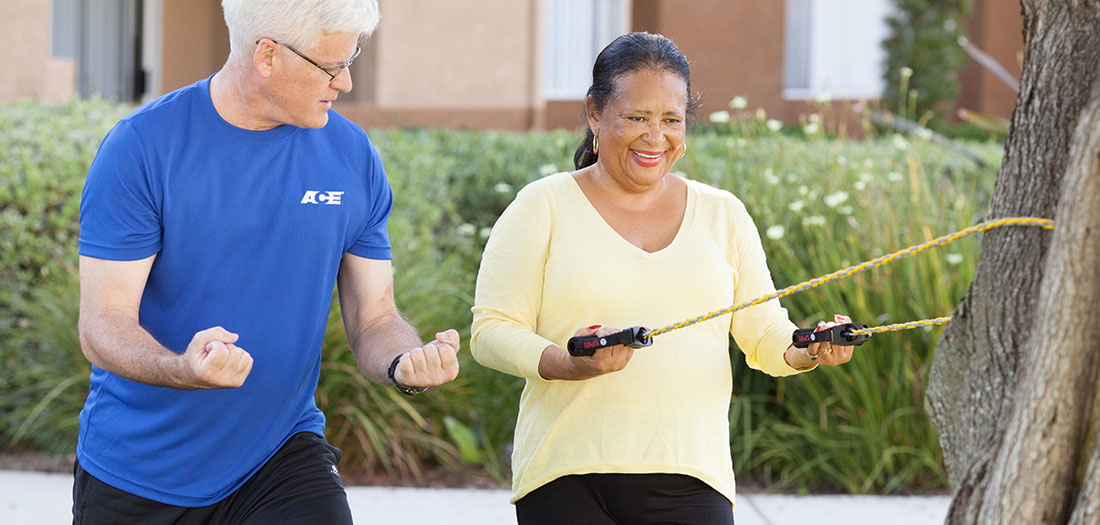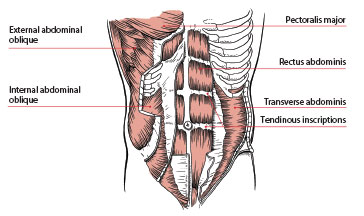Build Your Bicep Workout
Located at the front of the arm between the elbow and the shoulder, the biceps are perhaps the muscle most commonly associated with strength. Ask anyone to show you how strong they are and he or she will automatically strike the “strong man’s” pose. Strong and sculpted biceps not only look good, but also have practical uses for daily living skills. Strong biceps help you with any type of pulling movement, such as pulling weeds or raking, and also aid in lifting and carrying movements, such as carrying bags of groceries or assisting a child out of a car seat.
Featuring dumbbells and a resistance band, you will actually create this workout yourself by mixing and matching the exercises. Your biceps will be challenged with every workout and the variety will keep you from getting bored.
Build your biceps workout by choosing one exercise from column A, one exercise from column B, and one exercise from column C. Perform each exercise, in order, for 15 reps; rest one minute and repeat this tri-set of exercises one to two more times for a total of two to three sets.
Here are three sample workout combinations:
- Zottman Curl—Concentration Curl—Cross Body Curl
- Drag Curl—Alternating Hammer Curl—Biceps Curl Switches
- Zottman Curl—Alternating Hammer Curl-Cross Body Curl
| Column A | Column B | Column C |
| Both Arms | Choose 1 | Single Arm | Choose 1 | Alternating Arms | Choose 1 |
| Zottman Curl | Concentration Curl | Biceps Curl Switches |
| Drag Curl | Hammer Curl | Cross-body Curl |
Zottman Curl | Both Arms | Dumbbells
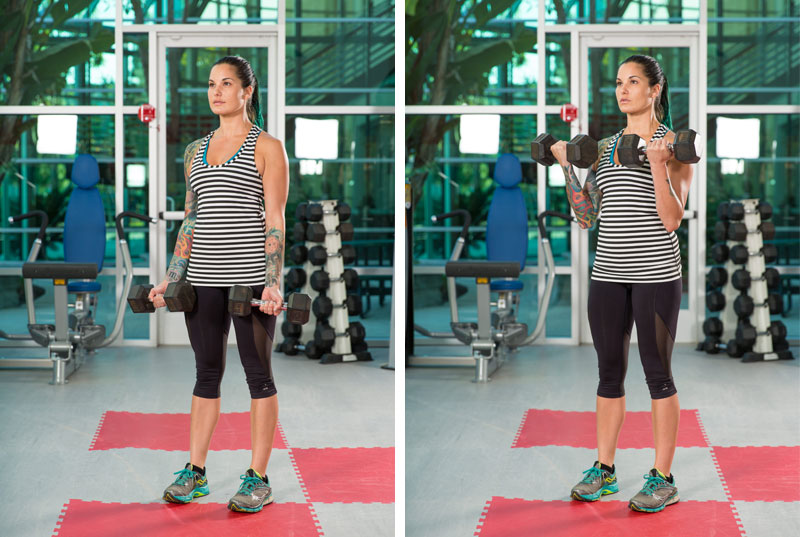
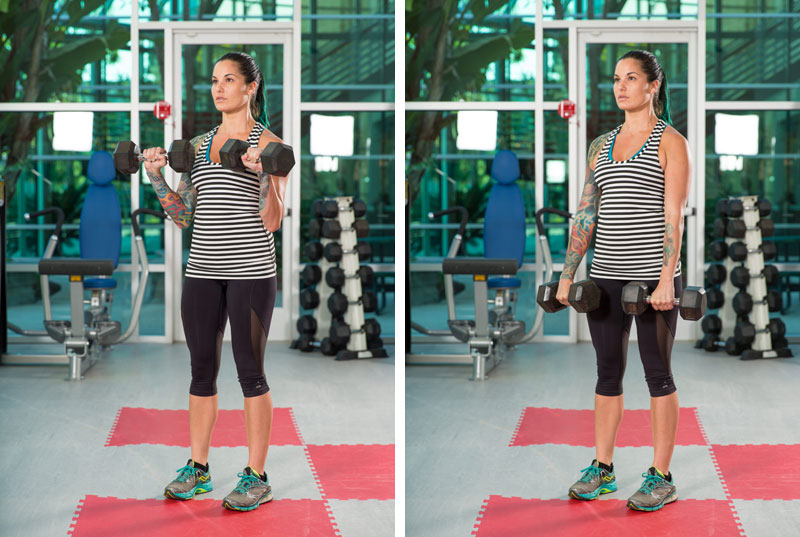
Stand holding a pair of dumbbells at your sides with palms facing forward. Keeping the inner arms close to your sides, curl both dumbbells toward your shoulders. Pause and rotate the dumbbells so the palms are facing downward and lower them back to your sides. Pause and turn the dumbbells again so the palms are facing forward and return back to the starting position.
Drag Curl | Both Arms | Dumbbells

Stand holding a pair of dumbbells at your sides with palms facing forward. Pull your elbows back and drag the dumbbells alongside your torso until the dumbbells reach chest height. Pause at the top and slowly drag the dumbbells back down to the starting position.
Concentration Curl | Single Arm | Dumbbells
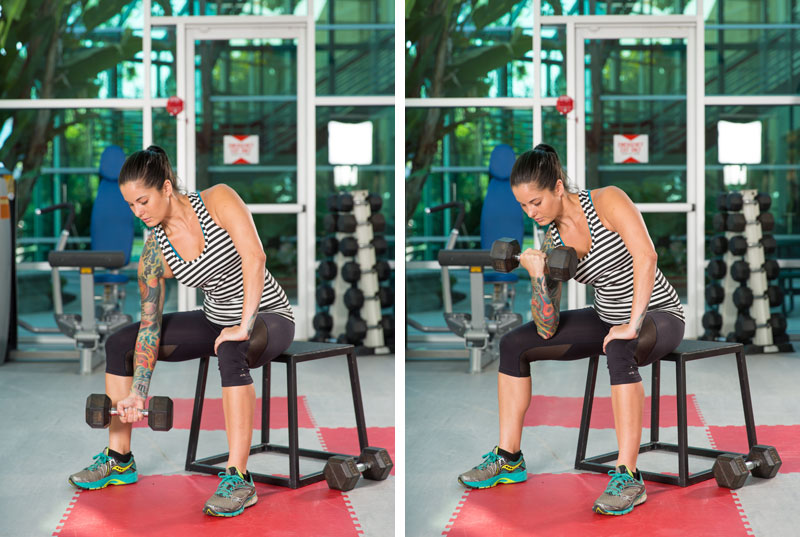
Sit down on a chair or bench while holding one dumbbell in your right hand; allow the dumbbell to hand between your legs. Place the back of your right upper arm against the inside of your inner right thigh. With the palm facing forward, curl the dumbbell toward the shoulder and slowing release back to the starting position, all while keeping the upper arm in contact with the inner thigh. Perform the suggested number of reps and then switch to the left arm.
Hammer Curl | Single Arm | Dumbbells
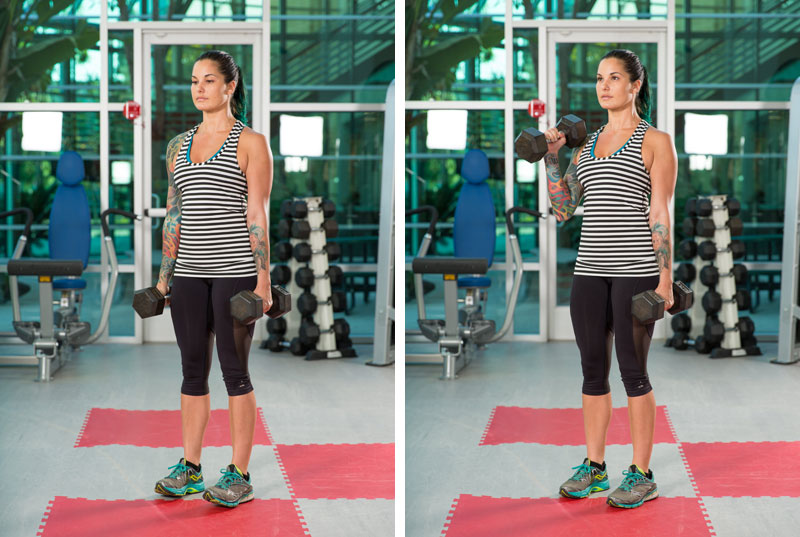
Stand holding one dumbbell in the right hand, arm by your side with the palm facing in. Keeping the inner arm close to your side, curl the dumbbell toward the shoulder and release back down to the starting position. Perform the suggested number of reps and switch to the left arm.
Biceps Curl Switches | Switching Arms | Resistance Band
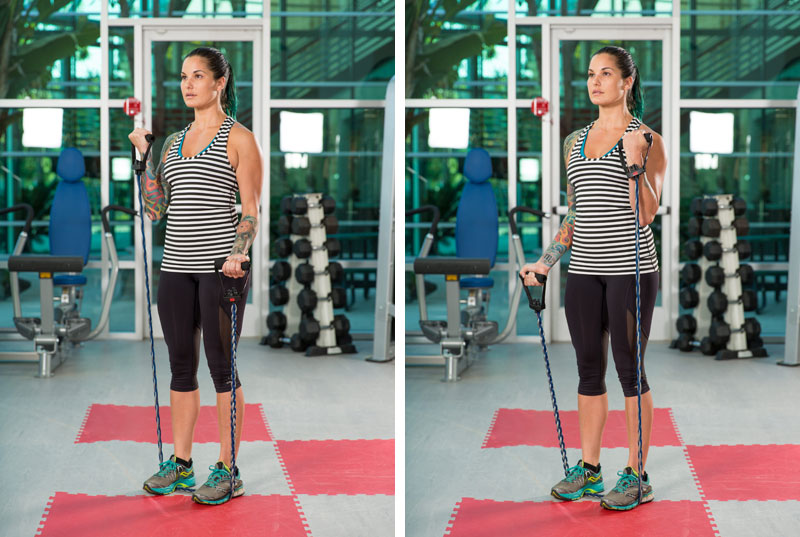
Step both feet, hip-width distance apart, onto the middle of a light-to-moderate resistance band. Hold a handle in each hand, arms by your sides, with palms facing forward. Curl the right handle up toward the shoulder. Release the arm back down to the starting position while simultaneously curling the left handle up toward the shoulder. The arms perform a switching motion—when one arm goes up, the other arm goes down.
Cross-body Curl | Alternating Arms | Resistance Band
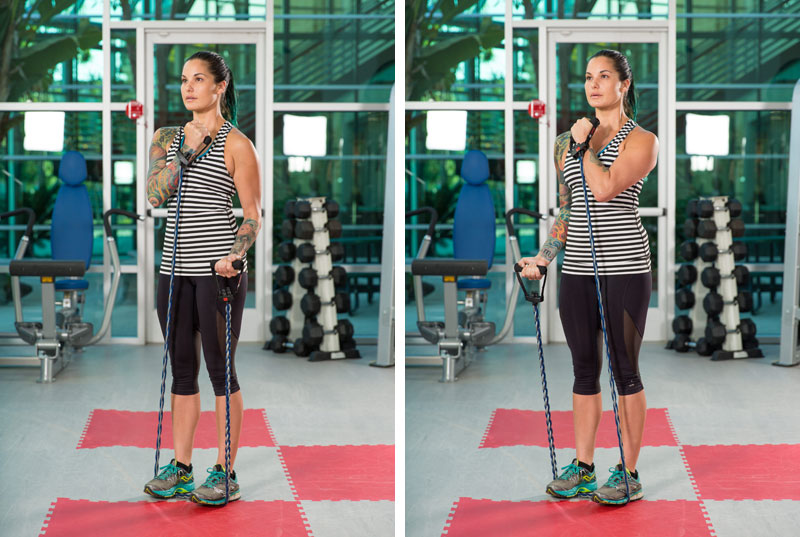
Step both feet, hip-width distance apart, onto the middle of a light-to-moderate resistance band. Hold a handle in each hand, arms by your sides, with palms facing in. Curl the right handle up toward the left shoulder as the arms crosses over the torso. Lower back down to the starting position. Curl the left handle up toward the right shoulder as the arm crosses over the torso. Lower back to the starting position.




